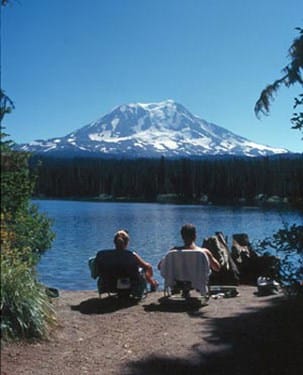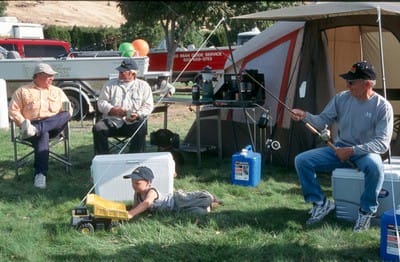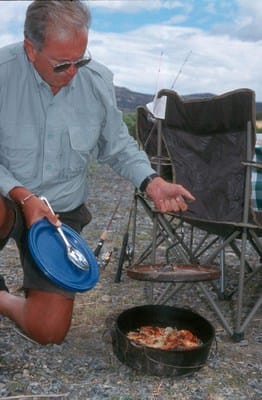
There’s no excuse for not going camping, and particularly none for those with children. After all, where’s the next generation of canvas-loving, Airstream-hauling, eggfoam-mattress-sleeping campers going to come from? It won’t be by chance; although I think I’m safe in saying that camping, especially extended male/female outings under adverse weather conditions, have resulted in more than one, how shall we say, little camper.
Currently, Jim Reid serves as the Director of Public Relations for The Coleman Company, Inc. Headquartered in Wichita, Kansas, The Coleman Company name has become synonymous with camping and the outdoors. In fact, anyone who has even glanced at a tent, lantern, flashlight, camp stove, or cooler is familiar with the Coleman name.

A while back, I had the opportunity to pin Reid down and ask him about how one gets started camping. My pretense, I explained, was the basic family of four—mom, dad, and two children, ages seven and eight. None of the family had ever camped, and thus they were essentially starting from scratch, both in terms of equipment and knowledge. Where does our family start?
“The basic checklist would include a tent suitable for a family of four with a little wiggle room,” Reid said. “Industry standards are that if it says it will sleep four, it will, but it’ll be cozy. A 10-by-10 foot dome, let’s say, will be fine for two adults and two kids, and leave room to walk and room for gear. Dome tents are a good way to go. It sets up easily, and will withstand a fair amount of weather. And it won’t be a huge investment, say, in the neighborhood of $100.”
He continued. “You’ll need a stove and a lantern. A two-burner stove is the standard, and propane is the most popular fuel. A lantern can be battery-powered or propane-fueled. And you’re looking at $40 to $50 for a stove, and $30 to $40 for a propane lantern. You’ll want four sleeping bags, and you will have to take into consideration the most prevalent climate. Most sleeping bags are temperature-rated, so if you know the coldest night you’re likely to encounter during camp-outs, go to that temperature rating. A large chest cooler, and maybe an intermediate cooler to hold drinks and snacks would be the way to go.”
He closed his introduction to gear with this money-saving tip. “I think our family could get by with using home utensils until they’re well-established, and know they’re going to like camping. Beyond that, they can begin buying some cooking kits and assorted utensils to keep in a standard camp box that’s always gathered in one spot and ready to go.”

Here’s where I’ll break briefly from Reid’s commentary and inject my own. My wife, Julia Carol, a life-long camper, keeps her camping gear, which includes utensils, paper products, table clothes, Zip-Lock bags, spices, condiments, matches, disposable butane lighters, extra propane tanks, and an assortment of additional can’t-do-without items in a pair of sturdy, hard-plastic milk crates. It’s a simple matter to put the crates in the rig, and upon arrival, unpack each according to her wants and needs. At the site, she’ll turn the crates on their side with the open end facing out, and use the boxes as storage—in essence creating a type of kitchen cupboard. When the trip’s over, the crates are righted, packed, and returned.
The kids? You want to take them, but you’re not sure how they’ll react.
“A happy camper is one that’s warm, dry, and well-fed,” said Reid. “It boils down to that, so if you take all the gear considerations and weather into consideration and make sure you have those bases covered, the kids are going to be fine.”\
Finally, there’s the where aspect. It’s one thing for our family to be outfitted and learned, but when the topic turns around to pointing said family in a definite direction and leaving the house, it’s a case of all dressed up and nowhere to go. However, it doesn’t have to be that way.
“Finding a place to camp is part of the adventure,” said Reid. “All states have parks and campgrounds where folks can go. A good bit of the country has national forests or parks, even Army Corps of Engineer lakes, where there will be campgrounds. Folks can do a little bit of research on-line, or they can go to a sporting goods store and find reference books on places to camp. That will be part of the process, and it will become a life-long quest to find wonderful places to camp. This country is blessed with a multitude of wonderful places to camp and have fun.”



